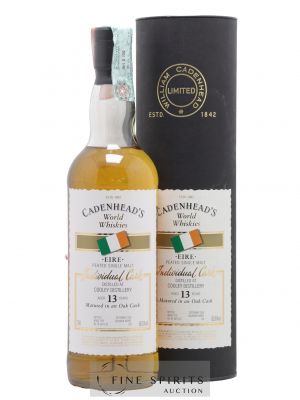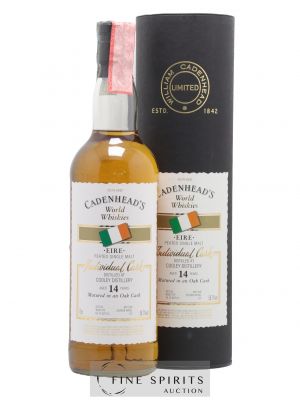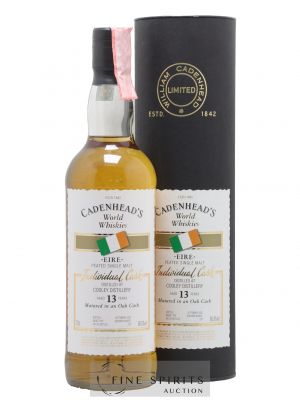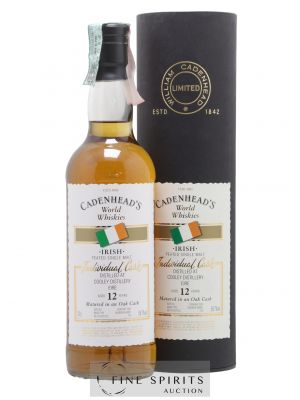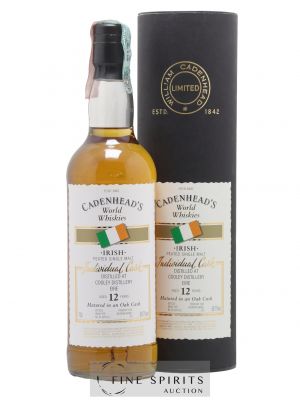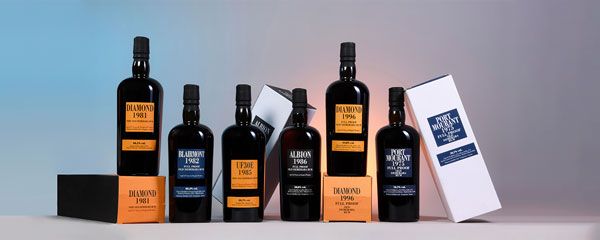Cuvée presentation
A single cask of Cooley aged in bourbon casks and bottled in 2005. Cadenhead was founded in Aberdeen in 1842 by George Duncan. William Cadenhead then joined the company and, when George Duncan died in 1858, took over and renamed the business after himself. William’s nephew Roberth Duthie developed the company in the early 20th century and it remained a family business until 1969. William Cadenhead Ltd was then sold to the Springbank distillery’s owner J. & A. Mitchell and Co. Hedley G. Wright, a direct descendent of Archibald and John Mitchell, became William Cadenhead Ltd’s CEO. In the past, Cadenhead had mainly sold its own brands, such as Putachieside, The Hielanman, Seven Stars and Green Label rums. Under Hedley G. Wright, the company began to take more of an interest in single malts. This led to the creation of the legendary collection of dumpy bottles in 1977. This series of single malts stood out for its very gentle filtration, lack of artificial colouring, and relatively high bottling strength for the time (80 proof/45.7% ABV). The labels included lots of information, including the month and year of distillation and bottling, and whether or not sherry casks were used. Also in 1977, the business moved to another address in Aberdeen, and finally to Campbeltown. In the 1980s, Cadenhead sold casks to legendary bottlers such as Samaroli and Corti Brothers through the subsidiary Duthie’s. Finally, two new whisky ranges were created in 1991 and 1992, the Original Collection bottled at 46% and the Authentic Collection bottled at cask strength. Other special series to mark Cadenhead’s major anniversaries (150 and 175 years), as well as new ranges launched since (Small Batch, World Whiskies, etc.), have all contributed to the company’s ongoing history up to the present day. A limited edition of 228 bottles.
The distillery Cooley
In 1987, entrepreneur John Teeling bought a former state distillery named Ceimici Teoranta and turned it into a new distillery named Cooley, whose spirit was produced in two separate ways. One used the column still already on site to create a grain whiskey for lighter blends. The second, set up two years later, added a pot still to produce a single malt. Another unusual feature of the Cooley distillery is its preference for double distillation over the triple distillation more commonly found among Irish whiskeys. Teeling later bought the former Kilbeggan distillery to stock Cooley’’s large volumes of spirits. In 2007, the Kilbeggan distillery also began producing whiskey again. Finally, in 2011, Jim Beam bought Cooley, before in turn being bought by Suntory in 2014.
Report a problem with this lot ? Report

